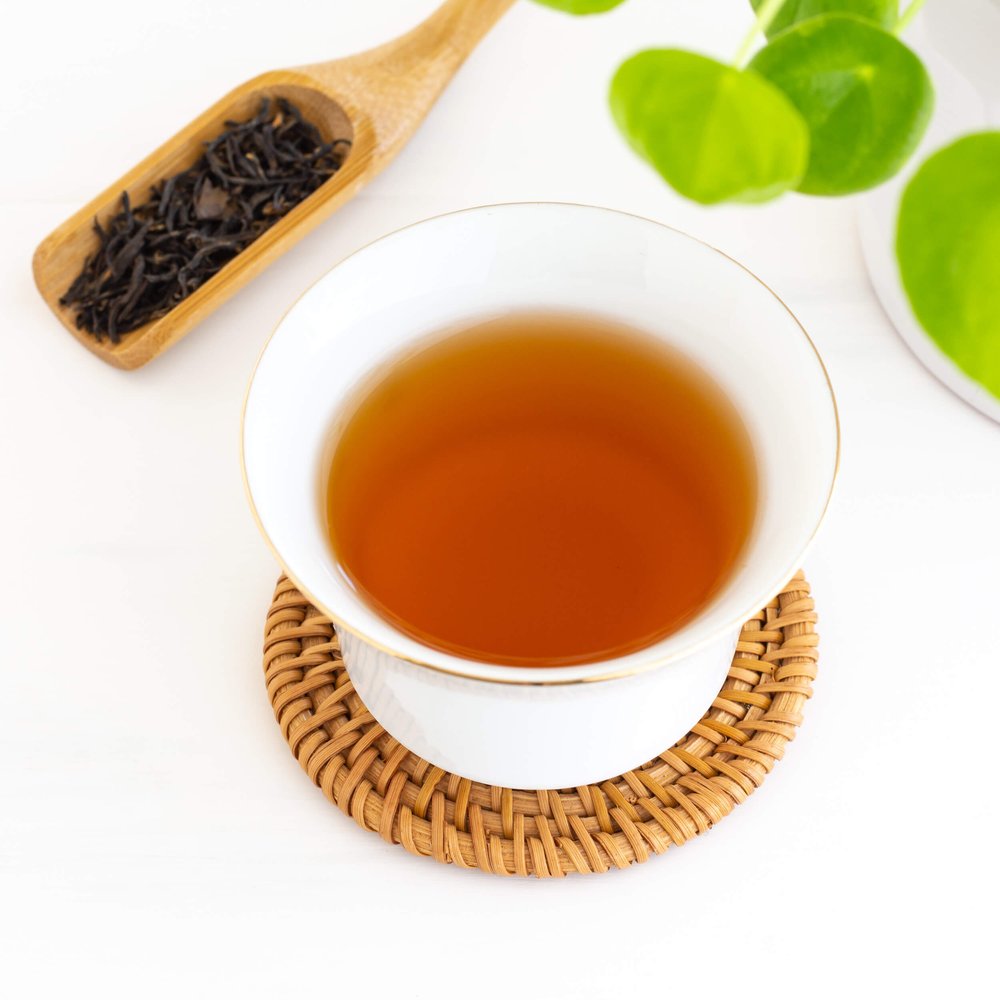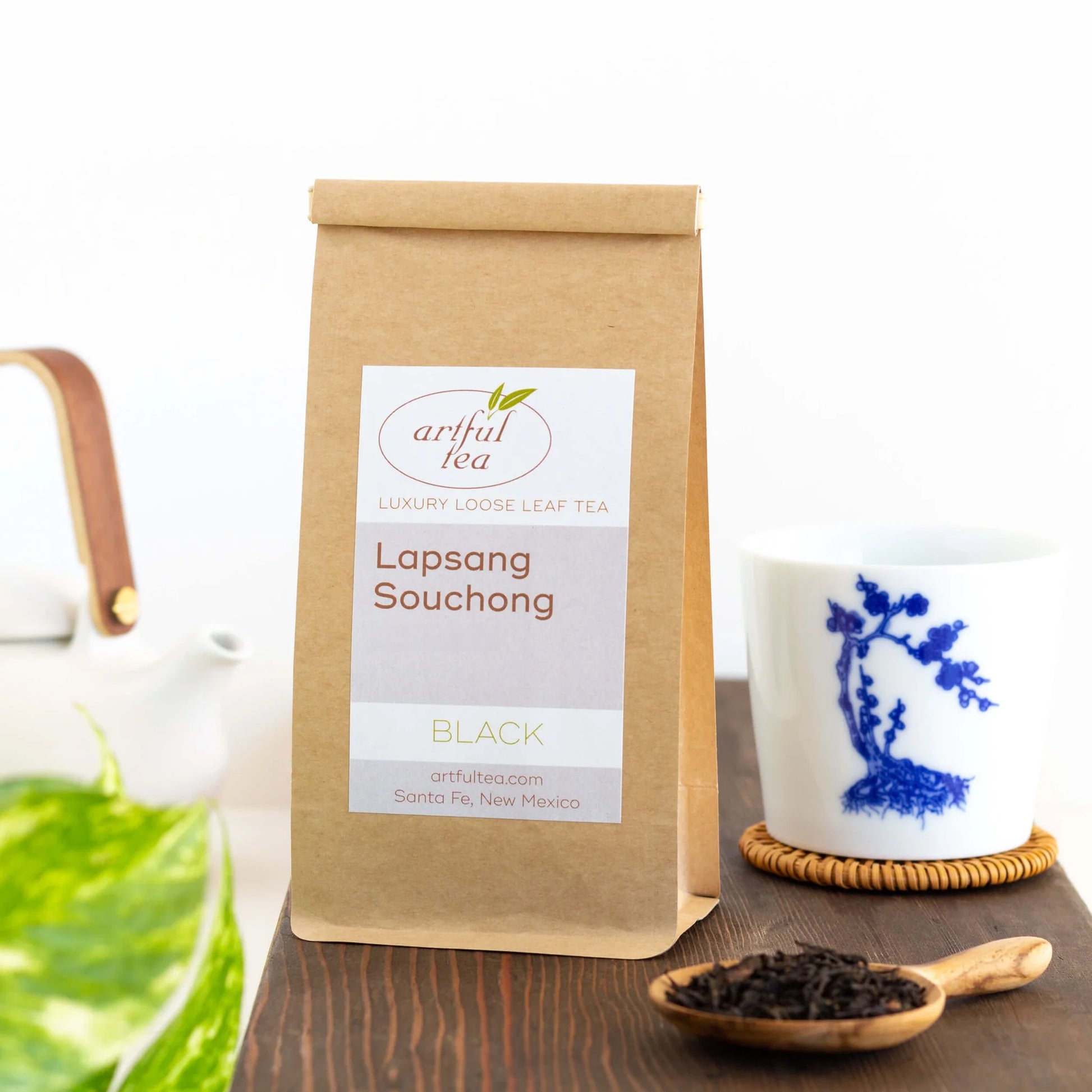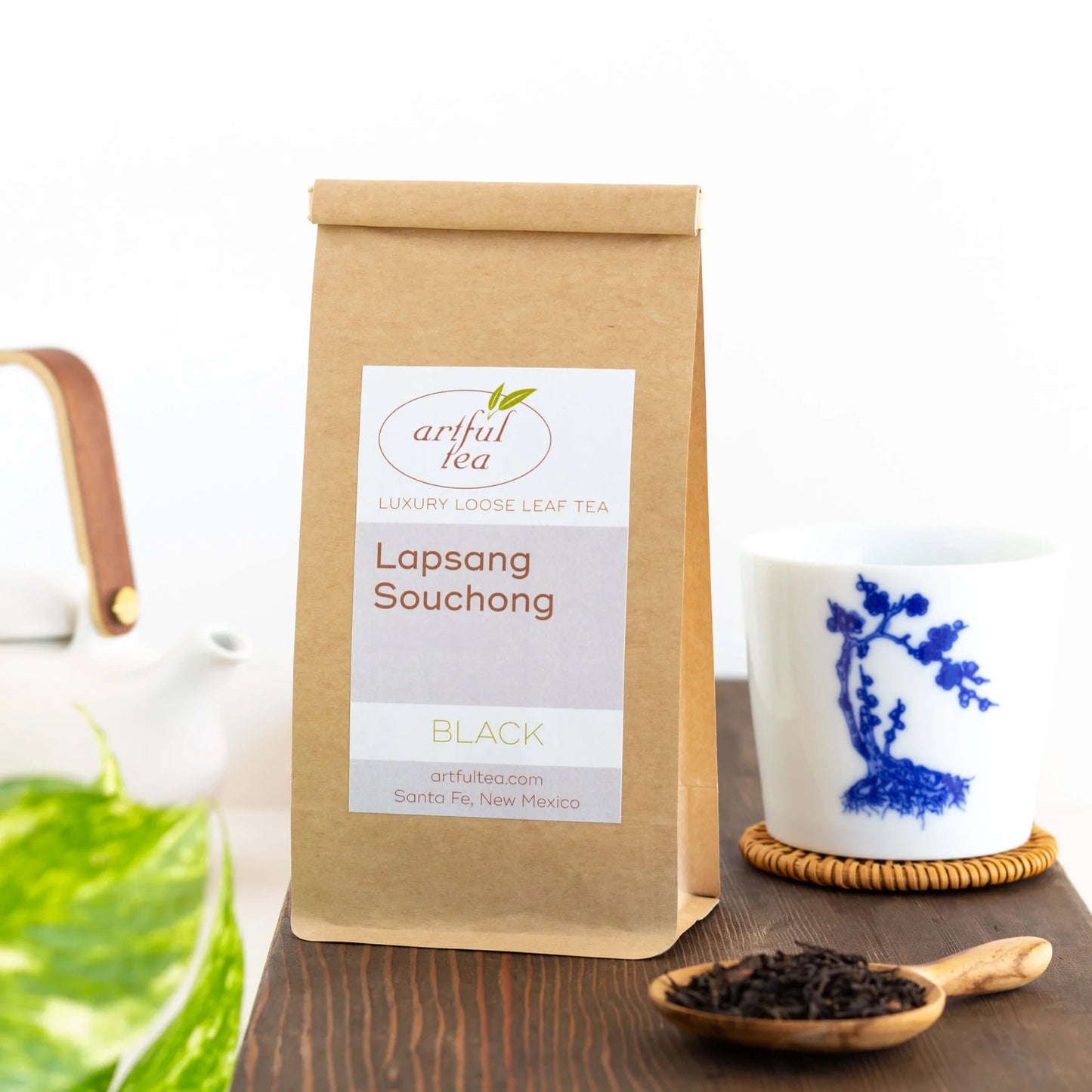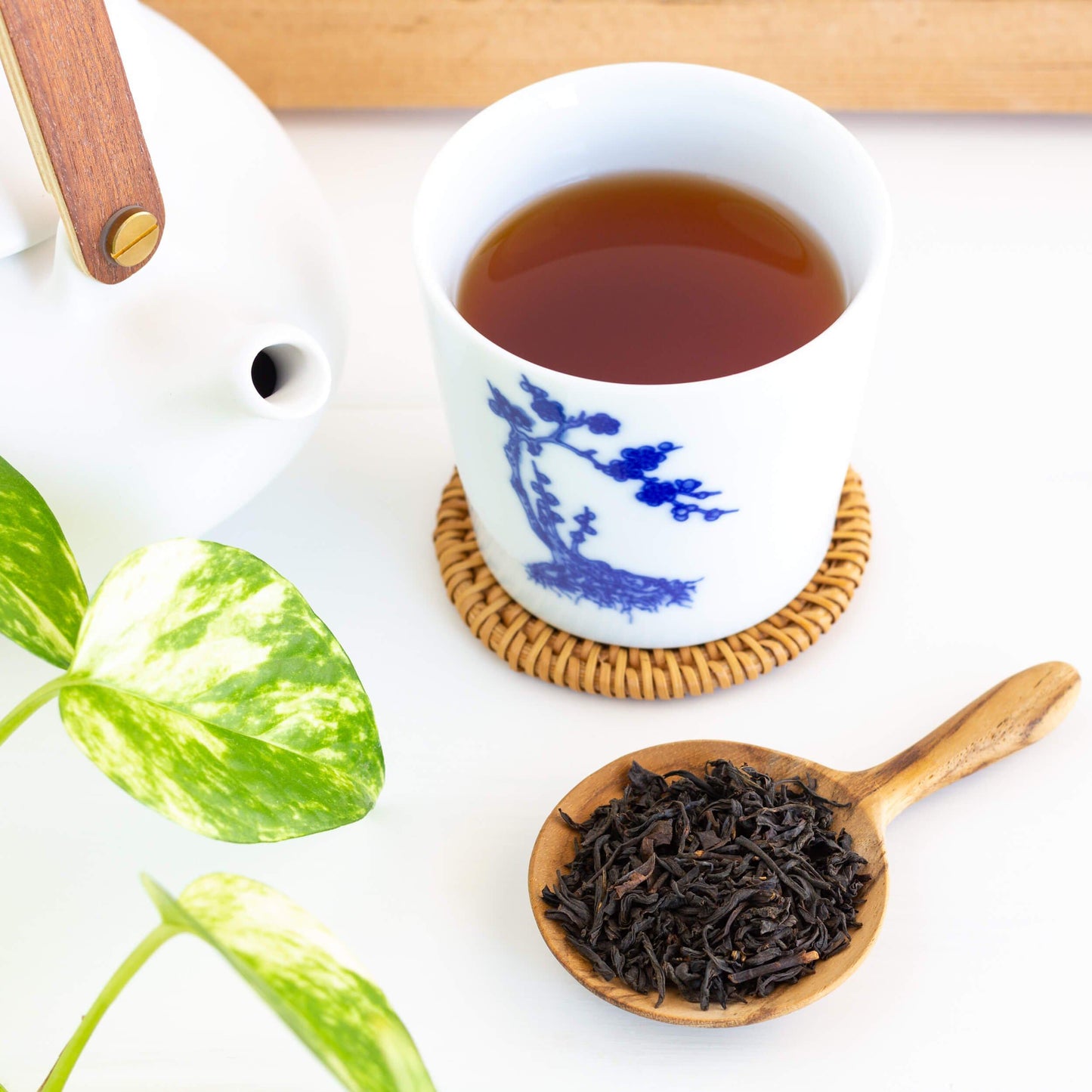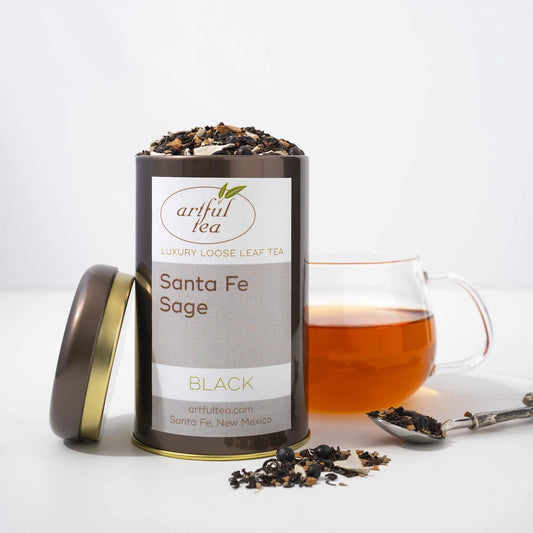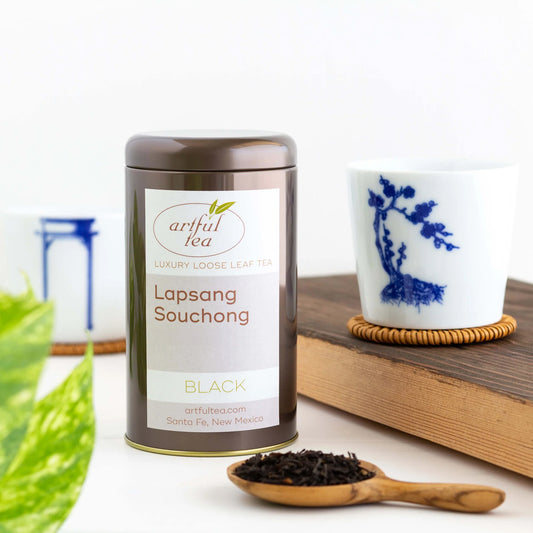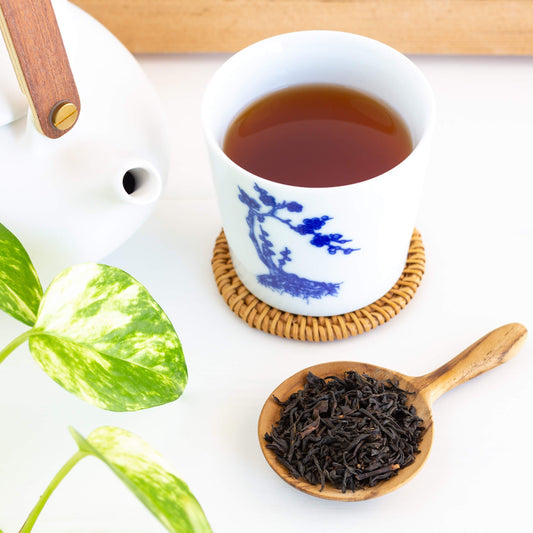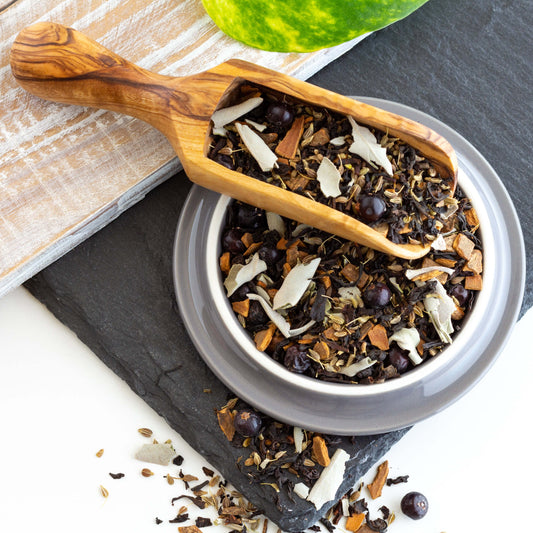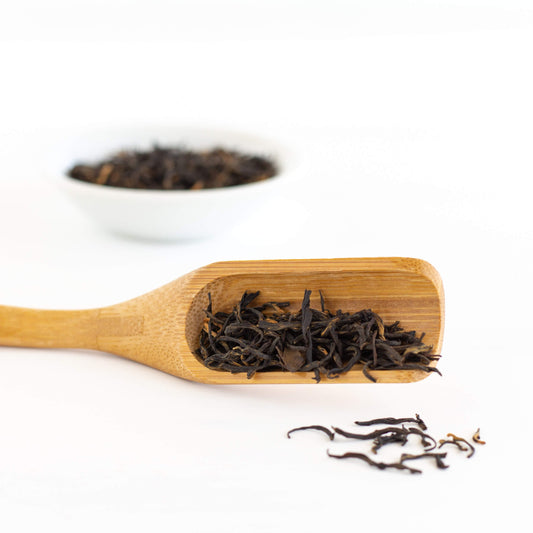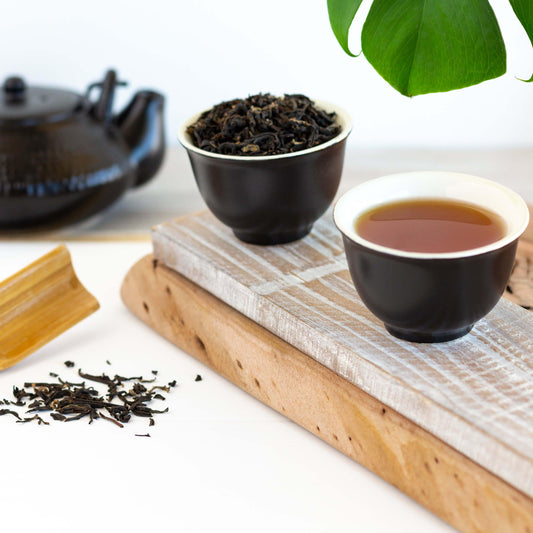About Lapsang Souchong
Lapsang originated in the Wuyi Mountains of the Fujian province of China, where it is still produced today. Like all Chinese black teas, Lapsang Souchong is produced from the leaves of the camellia sinensis plant. The name “souchong” refers to the fourth and fifth leaves of the tea plant, which are farther removed from the prized flowery pekoe bud at the tip, and are considered somewhat inferior in quality. When smoked and preserved as Lapsang, Souchong, however, these leaves become prized for their unique smoky flavor, and are highly sought-after all over the world.
Unlike other black teas, which are usually withered and then steamed or fired, the leaves used to make Lapsang are smoke-dried over burning pinewood. This process imparts a distinctive flavor to the tea, with a smoky, campfire-like aroma and notes of pine and burnt sugar.
Lapsang Souchong history
While the true story of Lapsang’s origins has been lost to time, a variety of popular legends have sprung up around the tea. Some stories claim that it was created by accident during the 17th century, when the leaves were burned during a raid. Other tales suggest that war caused tea growers to abandon the usual drying process and use smoke to quickly dry the tea. Whatever the true origins of this pine smoked tea, it quickly became a popular commodity as a unique twist on a typical black tea.
Although it has its origins in China, by the mid-1800s Lapsang Souchong had become popular in tea rooms across Europe, particularly in countries like Russia and England. Lapsang’s distinctive taste and flavor profile sets it apart from other black teas, and is often compared to other smoky luxury goods like fine cigars and scotch whiskey. For all its popularity in the West, however, smoked tea is not typically consumed in China. Instead, Lapsang Souchong is viewed as a valuable export, and is produced primarily for sale in Europe and America.
Lapsang Souchong benefits
Like other black teas, Lapsang Souchong has some beneficial properties. These include:
- High in antioxidants: Like other types of tea made from camellia sinensis plant, black tea is high in antioxidants.
- Helps with digestion: Consuming black tea can have a positive effect on digestion and help soothe stomach troubles.
- Boosts energy: Lapsang Souchong has a moderate amount of caffeine, about half that of a cup of coffee, which can help to boost energy and alertness.
- Contains anti-inflammatory properties: Like other types of tea, black tea can help to soothe symptoms of inflammation.
Lapsang Souchong caffeine content
Lapsang Souchong contains a moderate amount of caffeine, similar to other black teas. This means that it contains about half the caffeine of a cup of coffee.
How to brew Lapsang Souchong
To make Lapsang Souchong, we recommend using a ratio of one level teaspoon of tea leaves for every siz ounces of water. Heat your water to a full boil, approximately 212 degrees. Then steep for three to four minutes. Lapsang can become bitter if brewed for too long, so be sure not to oversteep.
We recommend preparing Lapsang Souchong using a teapot, tea infuser, or tea filter. These brewing methods give the tea leaves enough room to expand as the tea steeps, resulting in a richer, more flavorful cup. Enjoy Lapsang on its own, or take it with milk and sweetener if you prefer. Lapsang Souchong also makes (at least in our opinion) an excellent tea latte!
Lapsang Souchong and Russian Caravan
This unique tea is one of the primary components of a popular tea blend known as Russian Caravan. Russian Caravan is made by combining roughly equal parts of Lapsang Souchong and a classic black tea like China Keemun. Russian Caravan is typically slightly lighter and mellower than Lapsang, with the smoky notes balanced out by crisp, classic black tea. While we don’t sell Russian Caravan tea pre-blended, you’re welcome to purchase both Lapsang Souchong and another classic black tea and blend them yourself at home.
Our Lapsang Souchong
Our Lapsang Souchong is a smoky, aromatic tea with a smooth, crisp character. Reminiscent of woodsmoke or even expensive cigars, this classic tea has a hint of natural sweetness and is perfect to curl up with on a cool day. Like a campfire in a cup!
FAQs
Do you put milk in Lapsang Souchong?
Lapsang Souchong can be enjoyed on its own—but we think it’s also very tasty with a splash of milk. The milk cuts through the smoky bite of the tea. You can also add a little bit of honey to balance out Lapsang’s intensely smoky flavor.
What does Lapsang Souchong taste like?
Lapsang Souchong is strong, smoky, and slightly piney, with a mellow natural sweetness underneath the smoke. It’s by far one of the boldest, smokiest teas out there. For some, it’s an acquired taste. But Lapsang lovers can’t get enough of this cozy, smoky tea.
Does Lapsang Souchong have l-theanine?
Like all teas produced from the camellia sinensis plant, Lapsang Souchong does contain a small amount of l-theanine. However, other teas, like matcha and shade-grown green teas, are higher in l-theanine than black teas.
Is Russian Caravan actually Lapsang Souchong?
A common misconception is that Russian Caravan and Lapsang Souchong are one and the same. While Russian typically contains Lapsang Souchong, it also contains other types of tea, usually unflavored black tea or oolong tea. Like Lapsang Souchong, Russian Caravan is known for its smoky flavor, but Russian Caravan is slightly less smoky than Lapsang.
